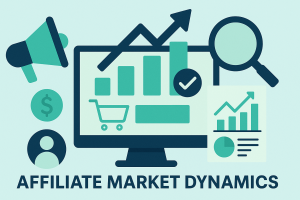
Share
Marketing has come a long way since newspapers and radio jingles. With the shift to digital, everything can be tracked and that data used to formulate true strategy in marketing as opposed to random guesses as to what will work with consumers. The introduction of d of data in marketing marked a turning point One key factor in this evolution is the use of data from different platforms to create strong marketing campaigns. By sourcing data internally from website cookies and externally from social media and competitor data, marketers can gain valuable insights into their target audience and industry to develop more personalized messaging and data-backed strategy.
Cookie Data
Website cookies analyze the behavior of website visitors and give businesses insights into user preferences and habits. For example, by tracking what pages users visit most frequently, how long they stay on each page, and what links they click on, businesses can get a better understanding of what interests their target audience. This data can then be used to create personalized messaging that speaks directly to the user’s unique taste and needs.
Social Media Analysis
Consumer data from social media platforms is another valuable source of information for marketers. Analyzing user’s interactions with a brand through posts, comments, impressions, shares, and other actions lets businesses figure out what gets the highest engagement and what their audience responds best to. From this, the marketing team can cater branded and third party content to the customer’s preferences. Researching your target audience on social media can also lead you to new affiliates and channels they engage with that might be effective to add to your affiliate portfolio.
Compare with your Competitors
Competitor data is another valuable source of information for marketers. Take note of what your competitors are doing to brand themselves, how they are engaging with their audience, what channels they are using to target them and the type of messaging they are putting out. On the flip side, take a look at how users are receiving the content. Is their engagement positive or negative? And how can you use that information to your own advantage, incorporating the good and taking note to avoid what didn’t work well for your peers. What is their audience wanting from them that they haven’t delivered on and can you do it first?
Although data is quite literally everywhere you look and you can pull insights from every piece of information, it’s crucial that you learn what trends to place importance on. Once you become aware of all the data you have access to it can be overwhelming to make sense of it all, but not all of it needs to be made sense of. As long as you can pull out the one or two biggest takeaways each time you go through your data and are able to make actionable strategy recommendations from those, then you are well on your way to becoming a data implementation expert.




